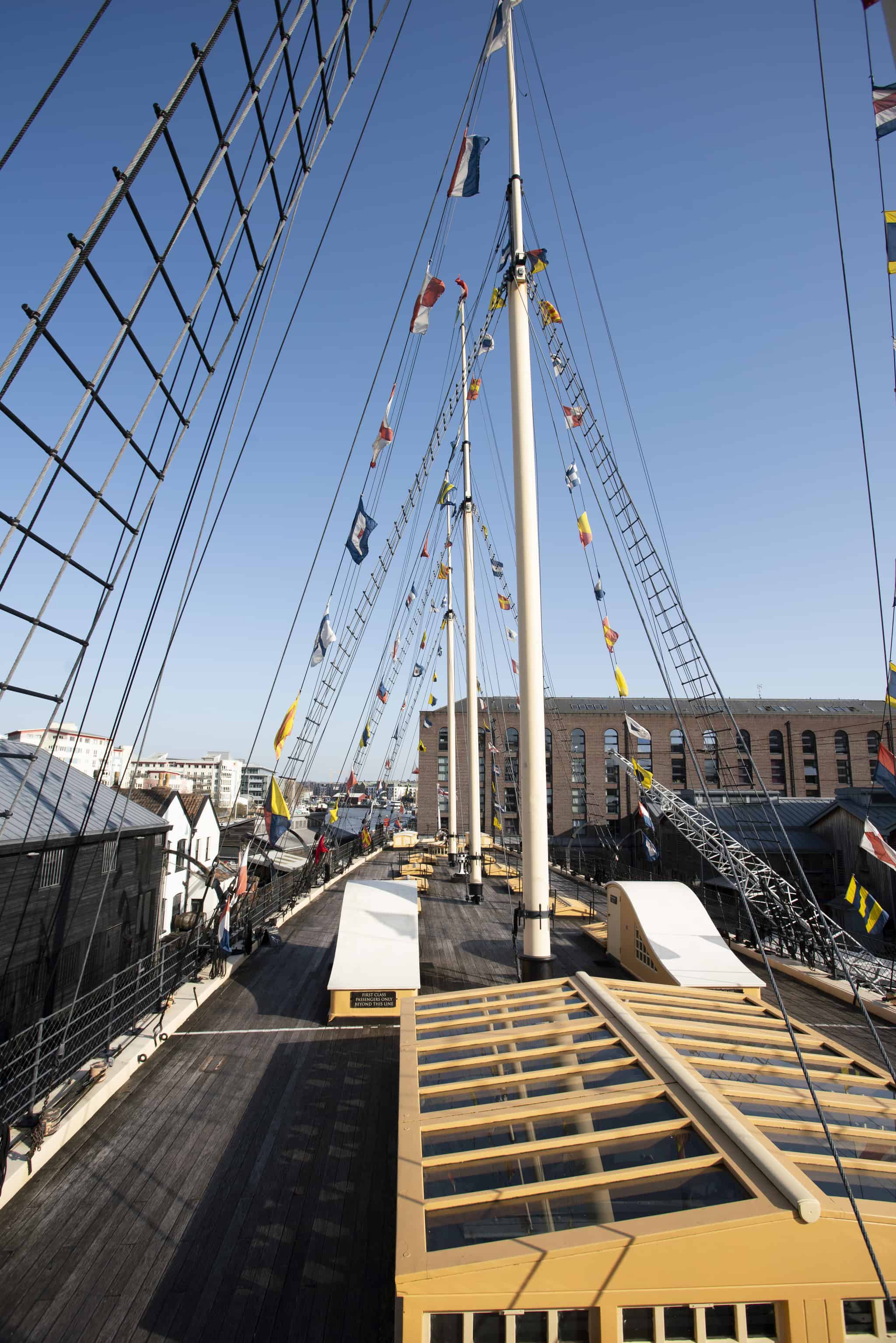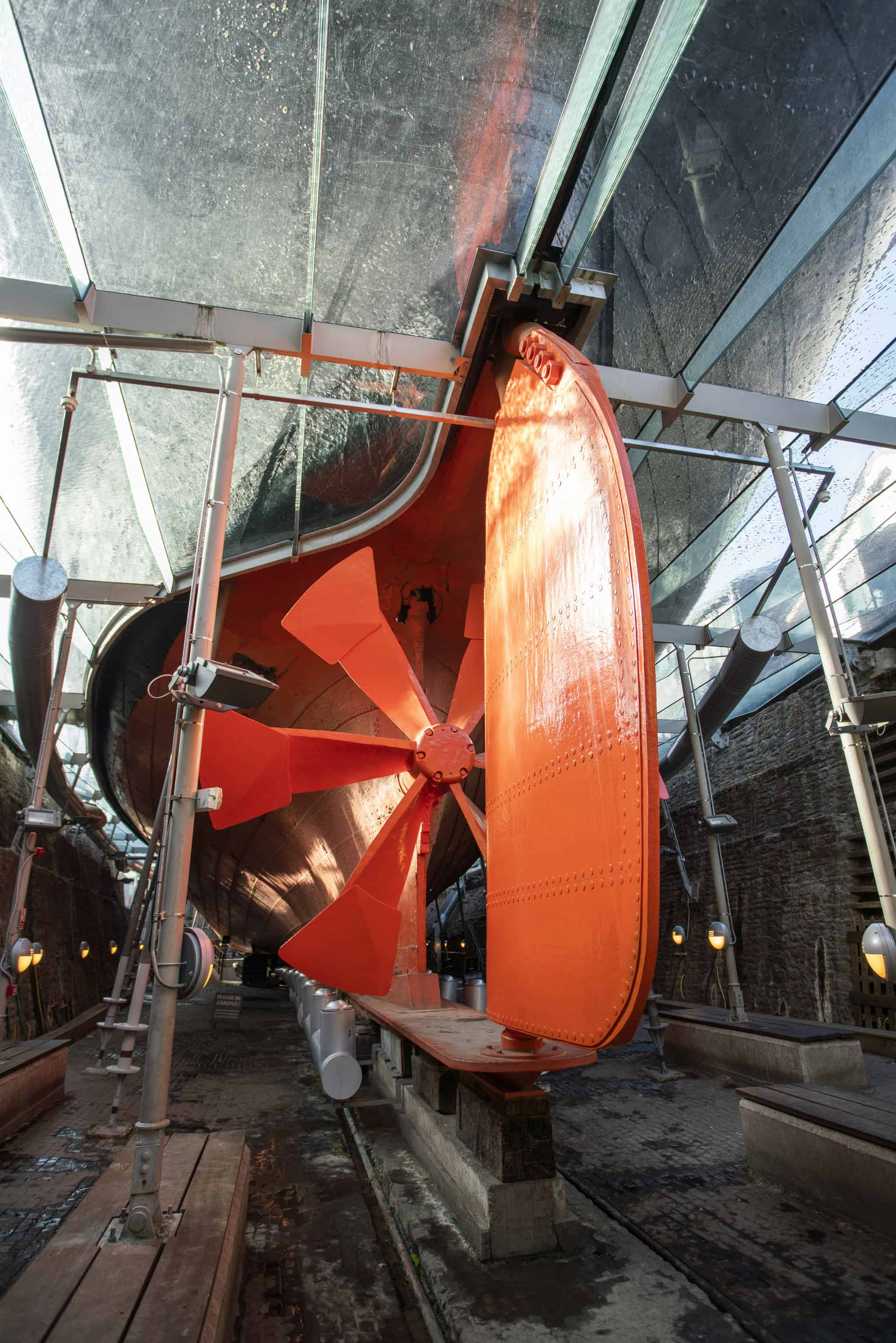These stories are the result of research by staff and volunteers of the SS Great Britain Trust. They come from the personal diaries kept by many passengers, allowing us to have a glimpse of what life was really like for first class and steerage passengers alike.
Passenger 1: Seweryn Korzelinski
Driven out of what is now Poland, Korzelinski made his way to Australia. Ever the optimist, Korzeliski tried many business ventures, from gold-mining to shop keeping. None were entirely successful, and his thoughts always drifted back to his homeland. Thanks to an amnesty, Korzelinski was able to return home in 1856.
In 1849, Seweryn Korzelinski fled his home out of fear of persecution. He supported Polish independence and fought with the Hungarians in a rebellion against the Austrian Empire. When this failed, Korzelinski escaped to Turkey and made his way to the UK via France.
In the UK Korzelinski felt welcomed, but he didn’t like the comments about his bushy moustache, a traditional Polish look. With little English, he was unable to find work, and decided to try his luck in the gold fields of Australia. Korzelinski boarded the Great Britain with 11 compatriots who were all in the same predicament.
Although the group travelled in steerage, they were more used to an upper-class life-style. Nothing escaped the Captain’s attention and Matthews often invited them to dine with him in first-class.
He describes at length the sheer boredom felt on a long sea voyage, as well as the many sleepless nights he spent cooped up in his berth listening to his fellow passengers snoring and watching rats running above his head.
On board, Korzelinski, ever the optimist, dreamt about his new life in Australia. “It will be nice and romantic to live in a tent erected between evergreen trees in this permanent spring weather!”
Memoirs he wrote once he arrived depict a very different life. He describes the danger on the gold fields. With little luck at the diggings, he turned his attention to other business opportunities, none of which were particularly successful. Luck never seemed to be on Korzelinski’s side; he even wrote about a failed attempt to domesticate a kangaroo!
With that, he wrote: “I’m leaving with mixed feelings. I resent the primitive life in the bush I was forced to live for three and a half years, as well as the unpleasant and violent characters I met. But I’m sad to leave good friends. However, my eyes have constantly looked north, towards my homeland.”
Thanks to an amnesty, Korzelinski’s life was no longer in danger and in March 1856 he was able to return to Poland.
Passenger 2: Mathias Jacobsen
Mathias Jacobsen’s story is one of struggle, heartbreak, and ultimately fulfilment. Constantly on the lookout for new experiences, he tried several different jobs throughout his life. Mathias travelled to New Zealand on the SS Great Britain in 1870, eventually returning home to Denmark five years later.
Born in 1843, the seventh of ten children, Mathias probably worked as a farmer up until the year 1864 when he became an army recruitment officer. Neither of these professions were satisfying enough for Mathias, and during the years 1865-1870 he went to work in America with two of his brothers.
Still Mathias was not content, and midway through 1870 he decided to join another of his brothers, Rasmus, as a gold prospector in New Zealand. As he writes in one of his letters to his family, ‘adventure, gold digging, and an aspiration to get as far away from home as any human being could’ had been on his mind ‘since he could begin to think.’
And so, on 4 October 1870, Mathias boarded the SS Great Britain on his way to New Zealand. Throughout the journey, he wrote of the strange animals he saw, the islands and ships they passed and, most notably, of how much he missed his family and girlfriend, Gertrud. His dream was to make enough money to buy a farm in his hometown, Funen, with her. His failure to find enough gold sadly hindered this ambition.
In 1875, he returned home to Denmark with little money, and took a job as a shooter and forest ranger. Shockingly, after writing a letter to Gertrud professing his continued love for her, and her response that she had waited faithfully for seven years for him to come home, Mathias married a different girl, Kirsten Jensen. What happened with Gertrud is a mystery.
Despite failing to find gold or marry his first love, and failing to buy the farmhouse he so desired, Mathias still professed to having a good life. He had seven children with Kirsten, and on 1 May 1891, finally made enough money to buy his dream farm in Stærmos.
Passenger 3: Anthony Trollope
While many passengers wrote diaries at sea, Trollope wrote a novel. He was one of the Victorian era’s most popular and prolific writers, and circled the globe twice.
Anthony Trollope was born in London in 1815 to an enterprising mother and well-educated, but unfortunate, father. Thomas Trollope failed to earn a living in the periods of his life spent as a barrister and a farmer. It was his wife Frances, a writer, who largely supported the family.
Anthony was educated privately, including a stint at Harrow. By 1844, Trollope was in Ireland where he met his wife Rose Heseltine. The couple had two children.
In spring 1871, Anthony and Rose decided to visit their son, Frederic, who lived in Australia. It coincided with a publishing deal to write a book that would be ‘useful to an Englishman thinking of emigrating to Australia’. On 24 May 1871 the couple, and their cook, embarked on the SS Great Britain bound for Melbourne.
Trollope wrote in his autobiography: ‘When making long journeys, I have always succeeded in getting a desk put up in my cabin, and this was done ready for me in the Great Britain, so that I could go to work the day after we left Liverpool. This I did; and before I reached Melbourne I had finished a story called Lady Anna.’
Anthony and his wife spent a year travelling in Australia and New Zealand which included a stint on their son’s sheep farm in New South Wales. This was clearly a popular place for sons of famous writers as Charles Dickens’s son Alfred owned the property next door! At that time, however, Trollope and Dickens were not on speaking terms.
The resulting book, entitled Australia and New Zealand, provided a sympathetic account of life in the Antipodes. It was punished by the Australian press, possibly because Trollope twice branded Australians as ‘braggarts’ in the narrative.
Passenger 4: Rachel Henning
Rachel Henning originally moved to Australia in 1854 but found it a world apart from her upper-class life in Somerset. Complaining about the oppressive heat and lack of class, she returned home to the UK. However, she set out again in 1861 to be reunited with her family, and it was the freedom from the shackles of class she found there which made her stay.
Rachel and her siblings were born into just the kind of high-society life described in Jane Austin’s Pride and Prejudice. Census records show the family living across the South of England in Somerset, Devon and at Backwell House near Bath.
Sadly, tragedy befell the family early on, as two of Rachel’s siblings died from Scarlet Fever. Biddolph, the only surviving son, was also left weakened by this condition, and by the time Rachel was 19 years old, both of her parents had died, leaving her to carry the weight of the family on her shoulders.
In search of a better climate for her brother’s delicate health, sibling Annie set sail for Australia with Biddolph in 1853. Rachel and her second sister Amy followed in 1854. Rachel quickly found herself out of her element both socially and intellectually; she hated the heat and she didn’t feel that she was any use to her brother. Homesick and resigned, she returned to England in 1856.
In England Rachel’s thoughts drifted back to Annie and Biddolph. In 1861 she returned to Australia aboard the SS Great Britain and resolved to ‘make a do of it’. Rachel kept a detailed diary of her experiences on board. Highlights included the discovery of a stowaway who became the surgeon’s assistant, a visit to the engine room in her long Victorian dress, and the birth of a baby who was named after the ship’s captain, doctor, and newspaper: John Gray Morland Hocken Great Britain Magazine!
Moving to Australia broadened Rachel’s horizons. Her adventures included crossing dangerous creeks, admiring mountain ranges and even feasting on eels out in the countryside. From first class cabins to camping in the starry outback, she ended up living a life that would have been unimaginable back in the UK – and surely unimaginable to the Rachel that first set foot on Australian soil!
Rachel married Deighton Taylor, who worked on her brother’s farm. The marriage was not welcomed by the family as they thought he was ‘not good enough’ and socially below her. Her new life in Australia allowed her to shake off the shackles of class, and she explained to her sister in a letter ‘I doubt if there is anyone else in the world who would have made me so happy or whom I could have made thoroughly happy. You know I am not the most patient of tempers.’
Together at last in Australia, the Henning sisters were reunited. Later in life and both widowed, Rachel and Annie chose to live together in old age.
Rachel’s letters were subsequently published under her maiden name in 1951, and are still in publication today.
Passenger 5: Thomasine Williams
From dressmaker to boarding house keeper, it appears Thomasine Williams had many jobs throughout her life. Although she emigrated at age 24, she never forgot her Cornish roots. She married three Cornish miners, two of whom were brothers, and had around twenty children.
Aside from her place of birth in Redruth, Cornwall, Thomasine Williams’ early life is a mystery. In 1851, she married John Tranuck Williams, a tin miner from the neighbouring village of Ludgvan. Less than a year later, the pair set sail for Melbourne aboard the SS Great Britain on the ship’s first voyage to Australia.
Just an eighth of all passengers on board were women, and Thomasine Williams was the only one to have a profession listed. Thomasine and John travelled in a steerage cabin, the cheapest way to travel. Conditions were cramped and rats would often be seen scuttling between the bunks and overhead! The pair had to suffer the sound of snorers in the nearby bunks and much more, as this fantastic diary extract describes:
‘The noise last night would have beaten Bedlam. One fellow went upstairs and got one of the goats. The poor animal came down with a loud baa, and was paraded round among the berths. The Captain came down but had to beat a retreat, as it was quite dark and the yelling was terrific’
On arriving in Australia, the couple made their way to Pleasant Creek, where gold was discovered in 1853. As a Cornish tin miner, John had many of the skills needed to make a success of gold mining, and it’s likely that Thomasine made and sold dresses to the families of other miners.
In March 1865, Thomasine lost her husband in a mining accident. Less than two years later she married his brother Francis, who sadly died two years after that. In 1875 she married for a third time, another Cornish miner from St Erith. At this stage in her life, her marriage certificate lists her as a boarding house keeper.
Thomasine died aged 65 in New South Wales of breast cancer, leaving around 20 children from her three marriages.




